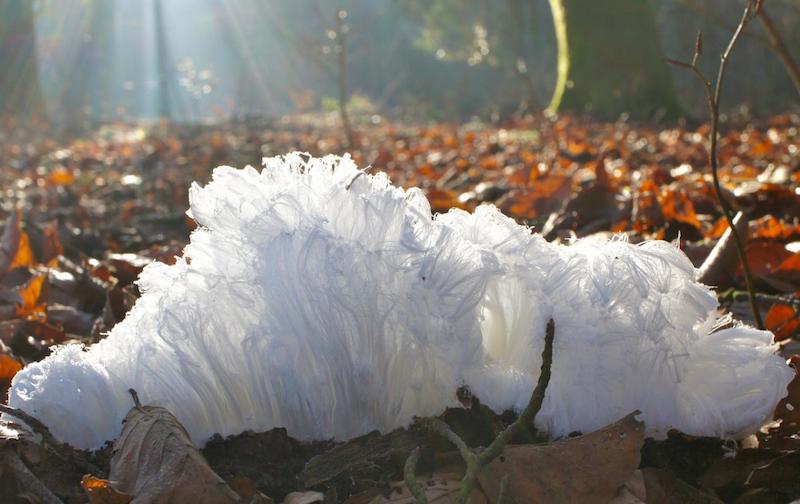-
Tips for becoming a good boxer - November 6, 2020
-
7 expert tips for making your hens night a memorable one - November 6, 2020
-
5 reasons to host your Christmas party on a cruise boat - November 6, 2020
-
What to do when you’re charged with a crime - November 6, 2020
-
Should you get one or multiple dogs? Here’s all you need to know - November 3, 2020
-
A Guide: How to Build Your Very Own Magic Mirror - February 14, 2019
-
Our Top Inspirational Baseball Stars - November 24, 2018
-
Five Tech Tools That Will Help You Turn Your Blog into a Business - November 24, 2018
-
How to Indulge on Vacation without Expanding Your Waist - November 9, 2018
-
5 Strategies for Businesses to Appeal to Today’s Increasingly Mobile-Crazed Customers - November 9, 2018
‘Hair Ice’ Mystery Explained almost 100 Years After First Discovery
Ice on the dead wood tested grew at a constant rate and crystallized as ice would on any other organic surface, but those with the fungus grew the odd hairlike structure.
Advertisement
“When we saw hair ice for the first time on a forest walk, we were surprised by its beauty”, said Christian Matzler from the Institute of Applied Physics at the University of Bern in Switzerland in a EGU press release.
Alfred Wegener, the scientist responsible for original research in plate tectonics, had studied hair ice in 1918, and theorized that there were biological factors playing into the formation of the ice’s unusual shape.
When scientists melted hair ice, they found the chemical signatures of fungal metabolism – proof that the fungi are growing along with the segregating ice structures. Wegener had linked this ice formation to the presence of mycelium, which were the fungus roots that lived on rotting wood and while doing so, they absorbed nutrients.
Moreover, Gisela Preuß, a biologist at the Wiedtal-Gymnasium in Neustadt, Germany, who captured some of the hair-ice photos for the new study said, “Hair ice grows mostly during the night and melts again when the sun rises”.
It is also nearly completely invisible in the snow, making the task of finding it in nature relatively hard.
Thanks to the efforts of three separate scientists, the odd, yet strangely lovely hair ice phenomenon mystery is solved and, spoiler alert: it’s fungus.
Types of living, fruiting bodies of Ascodiomycota and Basidiomycota were successfully identified on “hair-ice-carrying” wood, while Exidiopsis effusa (Ee) was identified on ALL investigated samples. One species – Exidiopsis effuse – appeared in every sample. They have utilized state of the art technology to pinpoint the exact species. These fungi decompose lignin with the enzyme lignase, which causes the wood to rot. When the air temperature drops sufficiently, water freezes into crystallization nuclei on the wood.
After thawing the branch, they treated it with fungicide, which in combination with hot water, prevented the development of any hair ice. However, at that time, they couldn’t gather any information on the species of fungus responsible for formation of hair ice. “Suction resulting from the repelling intermolecular forces acting at this “wood-water-ice-sandwich” then gets the water inside the wood pores to move towards the ice front, where it freezes and adds to the existing ice”.
Advertisement
“Although the fungus effect is still a mystery, it must be directly related to the hair-ice shape because the suppression of hair-ice growth acts immediately after the fungus activity is stopped”, the paper concludes.




























